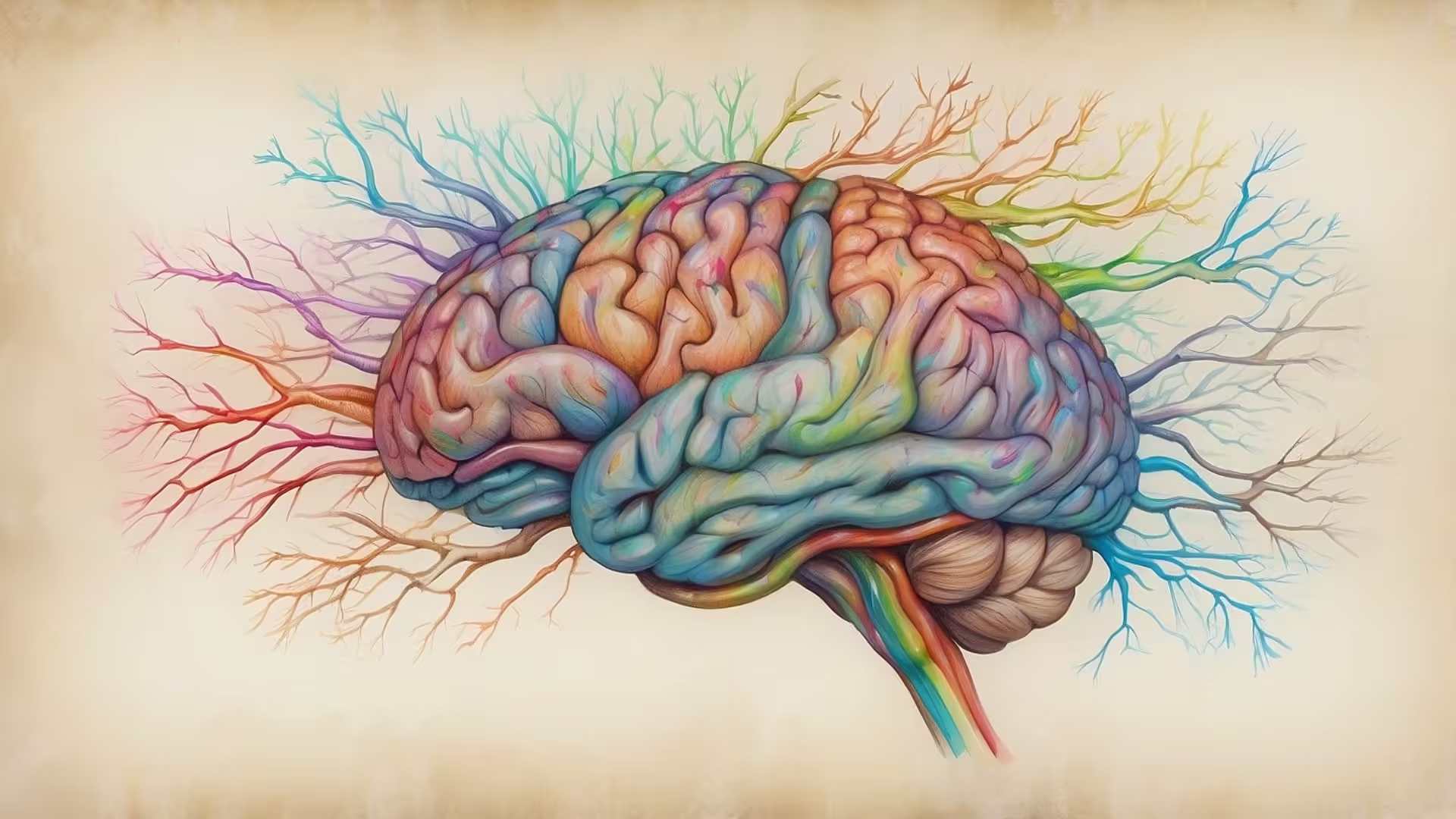The Gist
Neuroplasticity: How Our Brain Changes Throughout Life
The human brain is often described as the most complex organ in the body, capable of incredible feats of learning, memory, and adaptation. But one of the most remarkable aspects of the brain is its ability to change over time—a concept known as neuroplasticity. This discovery has revolutionized our understanding of how the brain works, shattering the old belief that our brain’s structure and function are fixed after early development.
What is Neuroplasticity?
Neuroplasticity, sometimes called brain plasticity, refers to the brain’s ability to reorganize itself by forming new neural connections. These changes can occur in response to learning, experience, or even after injury. Neuroplasticity allows the brain to adjust, adapt, and compensate for changes in the environment or internal conditions, such as injury or disease. It’s the reason why people can recover from strokes, relearn skills after trauma, and continue learning new things well into adulthood.
This ability is rooted in the brain’s neurons—specialized cells that communicate through electrical signals. Neuroplasticity allows neurons to change their connections and even form new ones, effectively rewiring the brain in response to new information or experiences.
How Does Neuroplasticity Work?
Neuroplasticity operates in two main ways: functional and structural plasticity.
- Functional plasticity refers to the brain’s ability to shift functions from one area to another. For example, if a part of the brain responsible for movement is damaged, other parts of the brain can take over and compensate for the loss. This is often seen in stroke recovery, where patients retrain their brains to regain movement and speech.
- Structural plasticity involves actual physical changes in the brain’s structure. When we learn a new skill, for instance, new neural pathways form, and existing ones strengthen. This can even be observed physically—studies have shown that musicians or taxi drivers, who rely heavily on certain types of memory and coordination, have noticeable differences in the areas of their brains associated with these skills.
Neuroplasticity Throughout Life
One of the most exciting aspects of neuroplasticity is that it occurs throughout our lives. While it’s true that the brain is more “plastic” during early development, neuroplasticity doesn’t stop when we become adults. In fact, every time we learn something new or adapt to a new situation, our brain is rewiring itself. This means that no matter your age, you can continue to develop new skills, improve your memory, and adapt to challenges.
For instance, people who learn a new language in adulthood show changes in the language-processing areas of their brains. Similarly, when someone learns to play an instrument later in life, the motor and auditory areas of their brain adapt and grow stronger. This is why lifelong learning is so beneficial—not only does it keep our minds sharp, but it also helps maintain the brain’s flexibility and adaptability.
The Role of Neuroplasticity in Recovery
Neuroplasticity also plays a crucial role in recovery after brain injuries such as strokes or traumatic events. When one part of the brain is damaged, other parts can take over the lost functions through functional plasticity. For example, if a person loses their ability to speak after a stroke, with the right therapy and rehabilitation, other areas of the brain can be trained to pick up that function, helping them regain their speech.
It’s a hopeful reminder that, even in the face of setbacks, the brain is capable of remarkable recovery and adaptation.
How Can We Harness Neuroplasticity?
The fact that our brains can change throughout life is great news, but how can we make the most of it? Here are a few ways to harness the power of neuroplasticity:
- Lifelong Learning: Keep challenging your brain by learning new things—whether it’s a language, skill, or hobby. This strengthens existing neural pathways and creates new ones.
- Physical Exercise: Exercise boosts blood flow to the brain, encourages the growth of new neurons, and enhances the brain’s plasticity. It’s one of the best ways to keep your brain healthy and adaptable.
- Mindfulness and Meditation: Studies show that mindfulness practices can increase the size and activity in parts of the brain related to focus, memory, and emotion regulation. Over time, these changes can improve mental flexibility and emotional resilience.
- Challenge Your Brain: Puzzles, games, and mental challenges are great for promoting neuroplasticity. Activities like Sudoku, crosswords, or even playing strategy-based games can enhance your cognitive abilities.
- Social Interaction: Engaging with others, having meaningful conversations, and maintaining relationships can stimulate the brain and encourage neuroplasticity.
Neuroplasticity is an exciting and empowering concept that shows us our brain’s potential for growth and change doesn’t stop at any age. Whether you’re recovering from an injury, learning something new, or simply looking to stay sharp, your brain is constantly adapting and evolving. The key is to keep it engaged, challenged, and nourished. So, how will you tap into your brain’s incredible capacity for change? Let’s explore how we can all use neuroplasticity to enhance our lives!
Let’s Talk
Neuroplasticity—it’s such a fascinating concept, isn’t it? The idea that our brains can keep changing and adapting throughout our lives is both comforting and empowering. But what does it actually mean for us in day-to-day life? I mean, how often do we stop to think about how our brains are rewiring themselves as we go about our routines?
Think about all the small things we do without realizing that they’re literally shaping our brains. Every time you learn something new, whether it’s picking up a new hobby, reading a book, or even just figuring out how to use a new app, your brain is working behind the scenes, forming new connections and strengthening pathways. It’s like you’re building a mental muscle, and the more you use it, the stronger it gets.
But here’s where it gets even more interesting: neuroplasticity isn’t just about learning. It’s about adapting to setbacks too. Ever had to recover from a major change or challenge in your life? Maybe you’ve gone through something like a career shift, a breakup, or even a physical injury. Chances are, your brain has had to rewire itself to cope with that change. The beauty of neuroplasticity is that it gives us the ability to bounce back, to recover, and even grow from those experiences. It’s a reminder that, no matter what life throws at us, our brains are built to adapt.
One thing that often goes unnoticed is how social interactions affect neuroplasticity. When you engage in deep conversations, listen to different perspectives, or connect emotionally with others, your brain is creating new connections. It’s not just about learning facts or skills—our relationships and interactions also shape how our brains work. Have you ever noticed how spending time with certain people can change the way you think or feel about things? That’s your brain adapting and rewiring in response to those social experiences.
Let’s talk about the practical side of this. How can we harness neuroplasticity intentionally? It’s not just about waiting for life to throw us a curveball or for a new learning opportunity to pop up. We can actually take control of how we shape our brains. Whether it’s taking on new challenges, practicing mindfulness, or even just making small daily changes, every little bit helps. I’ve found that even switching up my routine—taking a different route to work, for example—gives my brain something new to chew on. What about you? Have you noticed how trying something new, even in the smallest way, affects your thinking or mood?
And here’s the kicker: neuroplasticity doesn’t stop at a certain age. We used to think that the brain stopped changing after childhood, but now we know that’s not true. Whether you’re in your twenties, fifties, or beyond, your brain is still capable of growth and adaptation. It’s a good reminder that it’s never too late to learn something new or to approach life in a different way.
So, what’s something new you want to challenge your brain with? Maybe it’s learning a new language, trying your hand at painting, or even just tackling a complex puzzle. The more you push your brain to explore new territory, the more adaptable and resilient it becomes. Let’s talk about how neuroplasticity can shape our lives in ways we might not have thought about before. What changes are you excited to make, knowing your brain is ready for the challenge?
Let’s Learn Vocabulary in Context
Let’s dig into some of the key vocabulary from our conversation about neuroplasticity. These words are not just scientific terms but ones we can use in real life to better understand how our brains work and how we can keep them sharp.
First, there’s neuroplasticity itself. We talked about how it refers to the brain’s ability to reorganize and form new neural connections throughout life. In simpler terms, it’s how your brain adapts and grows in response to new experiences. You could use this word when you notice changes in yourself, like, “I’ve been learning to play the piano, and I can actually feel my brain’s neuroplasticity kicking in as I get better at it each day!”
Another important phrase is neural pathways. These are the connections in the brain that form and strengthen every time you learn something new or practice a skill. Think of neural pathways as the roads your brain builds to make certain activities easier over time. In everyday life, you might say, “The more I practice coding, the stronger my neural pathways become, and it’s starting to feel second nature.”
We also touched on functional plasticity. This is when the brain can transfer functions from one damaged area to another, like how someone might regain movement after a stroke. Functional plasticity is a testament to the brain’s resilience. For instance, you might mention, “After my knee surgery, I had to retrain my body, but it’s incredible how my brain’s functional plasticity helped me adjust.”
Then there’s structural plasticity, which involves the brain physically changing its structure when learning new things or adapting to new challenges. This is the kind of change we see when people acquire new skills, like playing an instrument or speaking a new language. You could say, “I started learning Spanish, and I know my brain’s structural plasticity is at work, helping me pick up vocabulary more easily.”
Lastly, let’s talk about lifelong learning. We’ve been using this phrase to describe how our brains can keep growing and changing no matter how old we are. Lifelong learning isn’t just about formal education; it’s about constantly challenging your brain. In conversation, you might hear something like, “I believe in lifelong learning, which is why I’m always trying to pick up new hobbies or learn new facts.”
Now, let’s think about this: What’s one way you’ve experienced neuroplasticity in your own life? And how do you think lifelong learning plays a role in keeping your brain adaptable and sharp? These are things worth reflecting on as we continue to understand how powerful our brains really are!










0 Comments